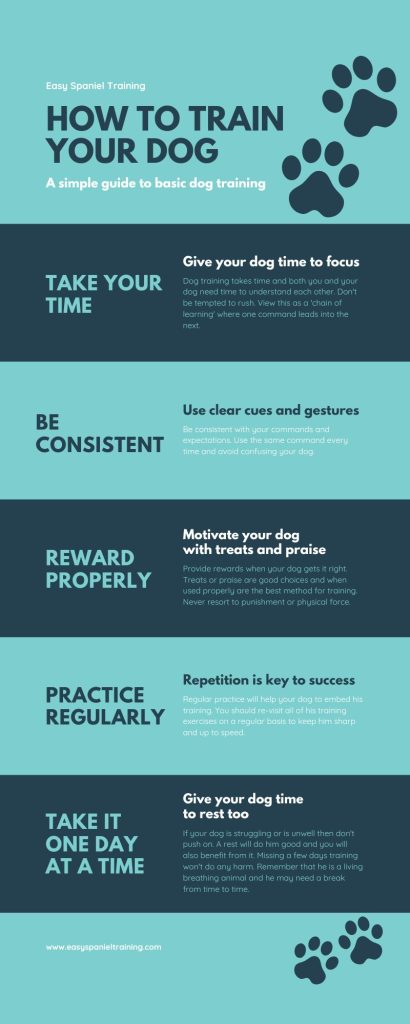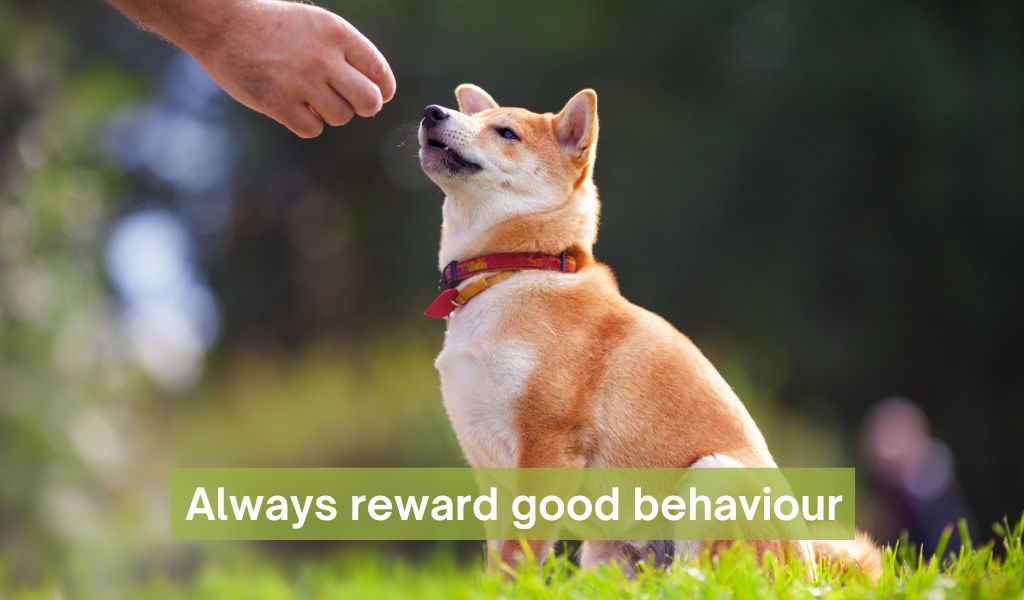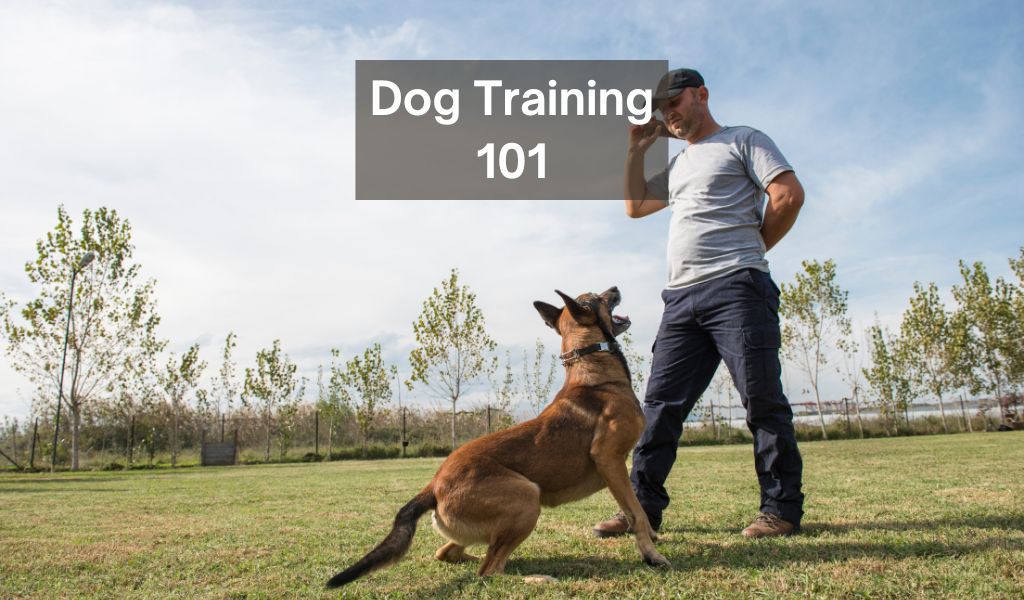Dogs are known as “man’s best friend” for a reason.
They are loyal, loving, and always happy to see us. However, owning a dog also comes with responsibilities, chief among them being training your dog.
Training your dog is essential for creating a good relationship with them and for keeping them safe. It can be challenging, but it’s worth it in the end. There are many different ways to train your dog, but the most important thing is to be consistent and patient.
The basics of dog training
There are four basic principles of dog training:
1. Reward good behaviour.
This is probably the most important rule of thumb when it comes to training your dog.
Dogs are very smart and they quickly learn what behaviours are rewarded.
So, if you want your dog to sit, stay, come, or lie down, be sure to give them a treat or some praise whenever they do it.
2. Be consistent.
When you’re training your dog, it’s important to be consistent with your commands and expectations.
If you sometimes let your dog jump on you and other times tell them to get down, they’re going to get confused.
It’s important to use the same words for the same behaviours every time.
3. Be patient.
Training a dog takes time and patience.
There will be setbacks and there will be days when it feels like you’re not making any progress. But, if you stick with it, eventually you will see results.
4. Use positive reinforcement.
Whenever possible, try to use positive reinforcement rather than punishment when you’re training your dog.
For example, if you want your dog to learn to sit, instead of pushing their bottom down and saying “no,” try luring them into the sitting position with a treat.
Once they’re sitting, give them the treat and praise them.

Dog training is a process
You could describe dog training as being a bit like a ‘chain’ with one aspect or area of the training linking to another.
A key example would be the ‘sit’ command.
Your dog needs to understand this command before you can move onto ‘stay’ or, in the case of a working dog’ stopping on the whistle.
It’s therefore important to approach dog training in a structured way, with each session building on the last.
Recommended reading
Getting started with dog training
Now that you know the basics of dog training, you’re probably wondering how to get started.
The best way to start is by enrolling in a obedience class or hooking up with someone that has dogs and can provide you with some one on one guidance.
This will give you a chance to learn the basics of training and to see how your dog responds to different commands.
If you’re not able to take a class, there are plenty of resources available online or at your local library.
Once you have a basic understanding of the principles of dog training, you can start working with your dog at home.
When you are training your dog it’s also useful to remember that you too are undergoing training, particularly if you are new to the activity and you’ll benefit tremendously from reading and watching videos about the subject.
There are many experienced trainers who will happily admit that they are still learning about dogs and how they react to training.
Start with the basics
When you first start training your dog, it’s important to keep things simple.
Choose one or two commands to work on and stick with those until your dog has mastered them. Once they’ve got the hang of those, you can move on to other commands.
Some basic commands that all dogs should know are:
Leave it
Drop it
These are all essential commands that will help you to keep your dog safe and under control.
But, before you start working on them, there are a few things you need to do first.
Choose a command word
When you’re choosing a command word, it’s important to pick something that is short and easy to say and ideally one syllable.
You’ll be saying it a lot, so it should be something that you can easily remember. For example, the command for ‘sit’ could be ‘sit’ or ‘hup,’ avoid using longer words.
Choose a behaviour
The next step is to decide which behaviour you want your dog to do when you give the command.
For example, do you want them to sit down? Or lie down?
Be specific about what you want them to do.

Get your dog’s attention
You need to have your dog’s attention to get the best results from training.
This means a quiet training area, free from distractions such as people and other dogs or animals.
Before you start giving commands, you need to get your dog’s attention.
The easiest way to do this is to call their name. Once they’re looking at you, you can give the command.
Be consistent
When you’re training your dog, it’s important to be consistent with the commands you use and the way you say them.
For example, if sometimes you tell your dog to jump on you and other times tell them to get down, they’re going to get confused.
It’s important to use the same words for the same behaviours every time.
Be patient
Training a dog takes time and patience. There will be setbacks and there will be days when it feels like you’re not making any progress.
But, if you stick with it, eventually you will see results.
Reward good behaviour
One of the best ways to motivate your dog during training is to reward them when they do something you’ve asked.
This could be a treat, a toy or simply some fuss and attention.
Rewarding your dog will help them to understand that they are doing what you want them to and encourage them to keep trying.
Be positive
When you’re training your dog, it’s important to stay positive and upbeat.
Dogs can sense when you’re angry or frustrated and this will make training harder.
If you catch yourself getting annoyed, take a break and come back to it later.
Remember, training is meant to be fun for both of you.
End on a good note
You should always end your training sessions on a positive note.
if your dog is tired or has been struggling to understand a new task then it is a good idea to stop and do something easy that the dog enjoys and understands.
Then, put the lead on and go home for a rest.
If you try to push them too hard, they’re only going to get frustrated and upset. So, if they’re struggling with a particular command, leave it for another day and try something else instead.
If training isn’t going well
Most people have periods when their dog training isn’t going as well as they would like.
This can happen for several reasons but is most often related to the dog simply losing confidence normally caused by too much haste during the training sessions.
Sometimes the owner can be going through a bad patch and this can impact the dog’s ability too.
If or when this happens it’s always best to take a break from training.
Do something different with your dog – take him to different places, let him run round and explore and when you see his tail wagging again and he has had a chance to ‘recover’ you can slowly approach training again.
Start with some simple, fun exercises that the dog knows and enjoys and take things slowly.
Training a dog can be challenging, but it’s also rewarding.
The tips we’ve provided should help you get started on the right foot.
Remember to be patient and consistent, and most importantly, have fun with your dog.




